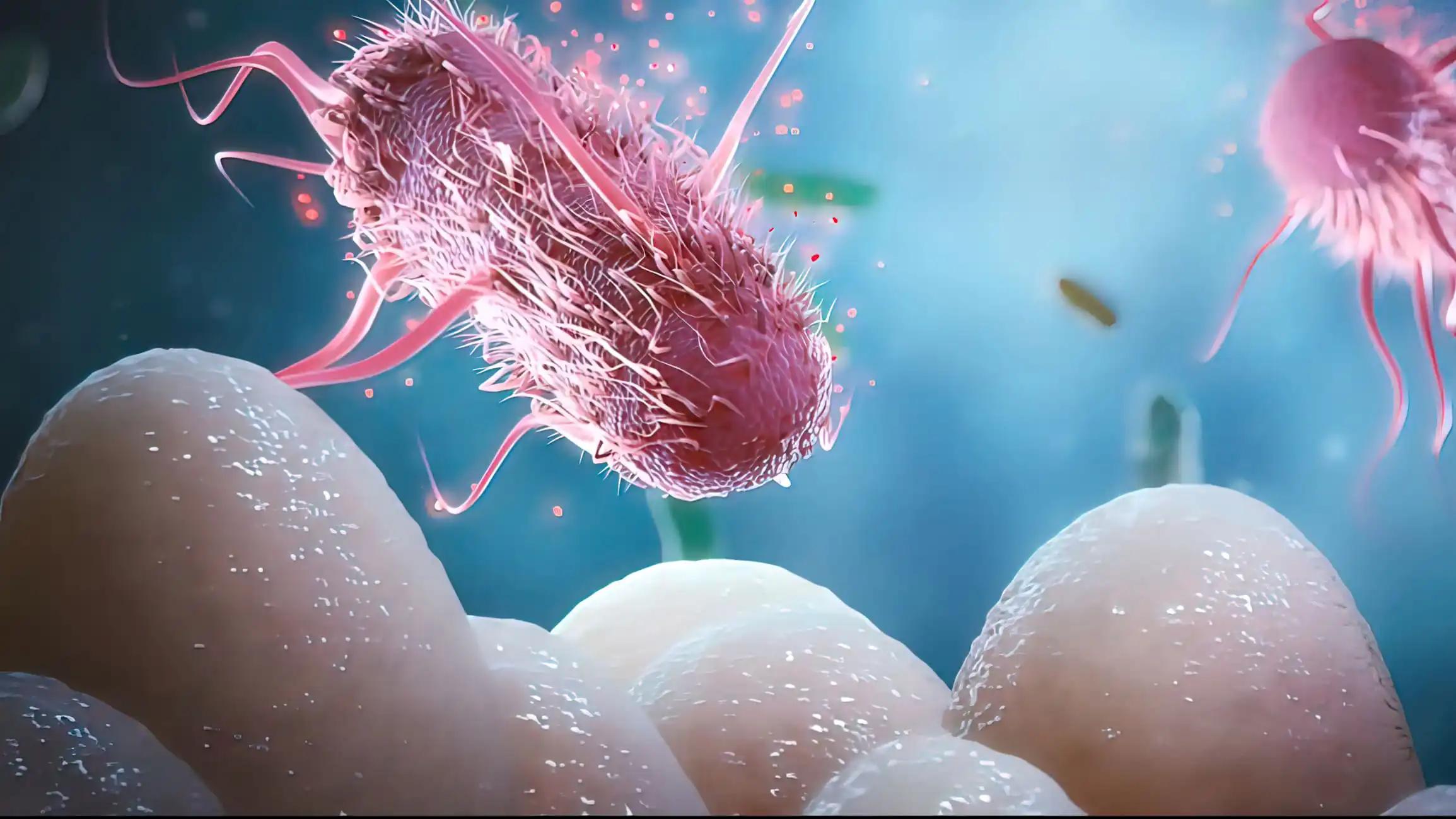KEY TAKEAWAYS
- The multicenter phase III trial GMMG-HD7 demonstrated the addition of the anti-CD38 monoclonal antibody isatuximab (Isa) to lenalidomide/bortezomib/dexamethasone (Isa-RVd) is superior to RVd.
- The study presented a subgroup analysis of patients with high-risk cytogenetics.
- MRD negativity rates for patients with high-risk cytogenetics were 50.4% with Isa-RVd vs. 37.4% with RVd, and for patients with ultra high-risk cytogenetics, 56.3% with Isa-RVd vs. 44.1% with RVd.
- The results were observed in patients with the most common high-risk cytogenetic features, including del17p, t(4;14), t(14;16), and gain1q21.
In the GMMG-HD7 phase III trial, adding isatuximab (Isa) to lenalidomide/bortezomib/dexamethasone (Isa-RVd) during induction therapy for newly-diagnosed multiple myeloma in transplant-eligible patients resulted in a higher rate of minimal residual disease (MRD) negativity compared to RVd alone.
Transplant-eligible patients with newly diagnosed multiple myeloma (NDMM) were randomly assigned to receive either RVd (lenalidomide 25 mg/d p.o., d1–14 and d22-35; bortezomib 1.3 mg/m2 s.c. d1, 4, 8, 11, 22, 25, 29, 32; dexamethasone 20 mg/d d1-2, 4-5, 8-9, 11-12, 15, 22-23, 25-26, 29-30, 32-33) alone or Isa-RVd, where Isatuximab (Isa) was added to the RVd regimen. Isa was administered at a dose of 10 mg/kg i.v. On days 1, 8, 15, 22, and 29 during cycle 1 and on days 1, 15, and 29 during cycles 2 and 3. Induction therapy was stratified based on the Revised International Staging System.
The study’s main goal was to assess the MRD negativity rate after induction therapy using NGF with a cut-off of 1×10-5. FISH was used to centrally analyze CD138-purified plasma cells, and high-risk and ultra-high-risk cytogenetics were defined by specific aberrations, respectively: del17p, t(4;14), t(14;16), gain1q21 (≥ 3 copies). The analysis was performed using a data cut-off in December 2021.
The study analyzed 660 patients, with 331 receiving Isa-RVd and 329 receiving RVd, and assessed their rates of NGF-MRD negativity. The results demonstrated that Isa-RVd was superior to RVd, with a 50.1% vs. 35.6% negativity rate, respectively (odds ratio [OR]=1.82, 95% confidence interval [95% CI]: 1.33-2.48, p<0.001). The treatment arms were well balanced regarding high-risk cytogenetics, with 264 of 584 (45.2%) and 82 of 580 (14.1%) evaluable patients having high-risk and ultra-high-risk cytogenetics, respectively.
Out of the 615 evaluable patients, 9.6% had del17p, 10.9% had t(4;14), 2.8% had t(14;16), and 37.4% had gain 1q21. Among patients with high-risk cytogenetics, the MRD negativity rates were higher with Isa-RVd (50.4%) than with RVd (37.4%) (52/139; OR=1.70, 95% CI: 1.04-2.79, p=0.03) with Isa-RVd vs. RVd. MRD negativity rates for high-risk patients were 56.3% (27/48) vs. 44.1% (15/34; OR=1.63, 95% CI: 0.67-3.99, p=0.28) with Isa-RVd vs. RVd, but the difference was not statistically significant. Similar results were observed for the major single high-risk cytogenetic features, such as del17p: 56.0% (14/25) vs. 35.3% (12/34), OR=2.33, 95% CI: 0.82-6.88; t(4;14): 57.6% (19/33) vs. 47.1% (16/34), OR=1.53, 95% CI: 0.58-4.06; t(14;16): 66.7% (6/9) vs. 50.0% (4/8), OR=2.00, 95% CI: 0.28-15.67; gain1q21: 48.2% (55/114) vs. 35.6% (37/104), OR=1.69, 95% CI: 0.98-2.92.
The evaluable patients were divided into three groups based on their cytogenetic risk: standard risk (absence of any high-risk aberration; 320/578, 55.4%), high-risk (exactly one high-risk aberration; 176/578, 30.4%), and ultra high-risk (≥2 high-risk aberrations; 82/578, 14.2%). The efficacy results were similar across all three groups. For standard risk patients, the MRD negativity rates were significantly higher with Isa-RVd (49.7%) (86/173) compared to RVd (36.7%) (54/147; OR=1.70, 95% CI: 1.09-2.68). For high-risk patients, the MRD negativity rates were higher with Isa-RVd (46.7%) compared to RVd (34.7%) (35/101; OR=1.65, 95% CI: 0.90-3.05), but the difference was not statistically significant. For ultra-high-risk patients, the MRD negativity rates were also higher with Isa-RVd (56.3%) compared to RVd (44.1%) (15/34; OR=1.63, 95% CI: 0.67-3.99), but the difference was not statistically significant either.
Source: https://library.ehaweb.org/eha/2022/eha2022-congress/357790/elias.k.mai.isatuximab.lenalidomide.bortezomib.and.dexamethasone.as.induction.html?f=menu%3D6%2Abrowseby%3D8%2Asortby%3D2%2Amedia%3D3%2Ace_id%3D2233%2Aot_id%3D26843%2Amarker%3D1769%2Afeatured%3D17676
Clinical Trial: https://clinicaltrials.gov/ct2/show/NCT03617731
Mai E, Bertsch U, Fenk R, Tichy D, Besemer B, Dürig J, Schroers R, Metzler I, Hänel M, Mann C, Asemissen A, Heilmeier B, Nievergall E, Huhn S, Kriegsmann K, Weinhold N, Luntz S, Holderrried T, Trautmann-Grill K, Gezer D, Klaiber-Hakimi M, Müller M, Khandanpour C, Knauf W, Scheid C, Munder M, Geer T, Riesenberg H, Thomalla J, Hoffmann M, Raab M, Salwender H, Weisel K, Goldschmidt H. ISATUXIMAB, LENALIDOMIDE, BORTEZOMIB AND DEXAMETHASONE AS INDUCTION THERAPY FOR NEWLY-DIAGNOSED MULTIPLE MYELOMA PATIENTS WITH HIGH-RISK CYTOGENETICS: A SUBGROUP ANALYSIS FROM THE GMMG-HD7 TRIAL. DOI: 10.1097/01.hs9.0000846588.94000.04



